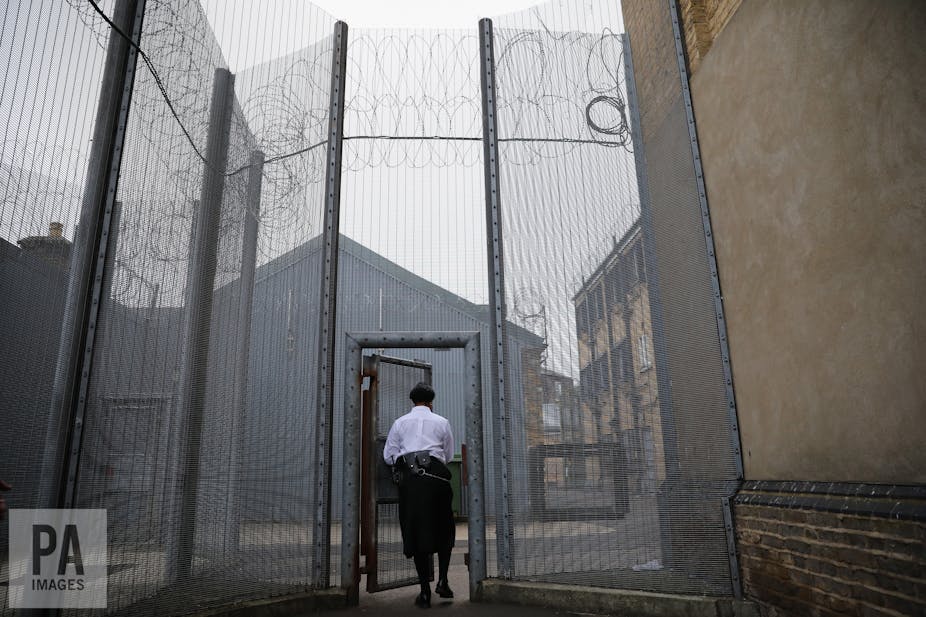Tensions are rising in English prisons. In early November, a riot at HMP Bedford involved hundreds of prisoners, and followed a range of violent assaults and disturbances earlier this year. A couple of days later, two prisoners escaped from HMP Pentonville. Over 10,000 prison officers then announced plans to strike over deteriorating health and safety conditions in prisons – although their walkout was stopped by a court order.
Meanwhile, a range of recent TV documentaries have also graphically captured the deterioration of safety and overall living conditions for both prisoners and staff. Prisoner phone videos and Facebook accounts have also exposed the abuse of harmful substances and the general chaos within some prisons.
Many of these media depictions cast a picture that prisoners are “out of control”, often being uncooperative and un-receptive to prison discipline and rehabilitation. The public is getting unprecedented insight into the otherwise private world of prisons and seeing first-hand the absurdity and brutality of prison life. But this information is mostly presented in a way that blurs and neglects prisoners’ own perspectives and insights into prison’s effects on their lives and well-being.
An unforgiving environment
For decades now, researchers and activists have pointed out the ineffectiveness and harshness of incarceration, and called for the problems posed by modern punishment to be reviewed.
During ongoing research I am conducting with women prisoners, it is common to hear about how custody has changed their view of the world, damaged their self-perceptions, and disrupted relationships with family and children. Upon reception into custody, many women prisoners have significant chronic health conditions, do not have permanent accommodation or employment, suffer from addictions and mental ill-health. Many have been victims of violence.
Some of these women told me that prison made them even more vulnerable to abuse, harassment, stigmatisation and exclusion. They are also well aware that their criminal record could limit their opportunities for proper reintegration into their communities upon release.
In our conversations, they repeatedly talked about feeling isolated and lonely, but often also feeling guilty and ashamed. Self-injury and drug abuse become common tools used in order to cope with traumatic experiences prior to imprisonment. These experiences, when coupled with the painful effects of imprisonment, significantly harm their overall well-being. Some talked about attempting suicide both during and after prison. Many talked about finding no other way to survive other than returning to offending, and so back into custody.
No thought for well-being
Although basic care is available in prison, access to it is often hindered by staffing and overcrowding issues. Treatment is often over-medicalised, including a tendency to over-rely on the prescription of psychotropic medication to manage addictions, mental illnesses and even to make prisoners comply with the rules. This approach tends to perpetuate women’s addictive behaviour and sense of dependency and docility, instead of moving towards rehabilitation.
Healthcare in prisons also lacks a focus on general well-being. It is not based on meaningful activities and relationships, personal connections and communication, and opportunities to shape a more productive future. Prisoners can easily distinguish between “better” or “worse” prison conditions, and prison regimes which are more or less legitimate. They can identify unsanitary and inhumane living spaces, poor prisoner-staff relations, procedural disorganisation and lack of rehabilitative opportunities. But they say that short-term improvements to these problems often fail to address the underlying ineptness of imprisonment, particularly its vastly negative impact on their overall lives.
The justice secretary Liz Truss, like her predecessor, Michael Gove, has proposed significant reforms to the prison system. These include plans to build new prisons to replace ageing establishments, hire 2,100 extra officers, improve drug tests, develop new security and contraband detection technologies, and give greater autonomy to governors. But these reforms do not address the underlying issues that created the current penal crisis in the first place.
The wrong solution?
England already has the largest prison population in western Europe. Most problems facing the prison system today are a consequence of a punitive and aggressive approach to imprisonment in the past 30 years, which is being promoted or at least safeguarded by the proposed reforms.
But there is mounting evidence that prison does not solve the problem of crime – in many ways, it actually perpetuates it instead. Unless this is recognised by politicians, then we are likely to see this latest crisis continue, and any short-term solutions will prove mostly ineffective.
Understanding what imprisonment feels like can raise questions that go beyond the current crisis, putting the prison system under the spotlight. It can also help create space for discussion of alternatives, including community-based interventions such as drugs programmes and employment training, to what has repeatedly been shown as a failing system.

